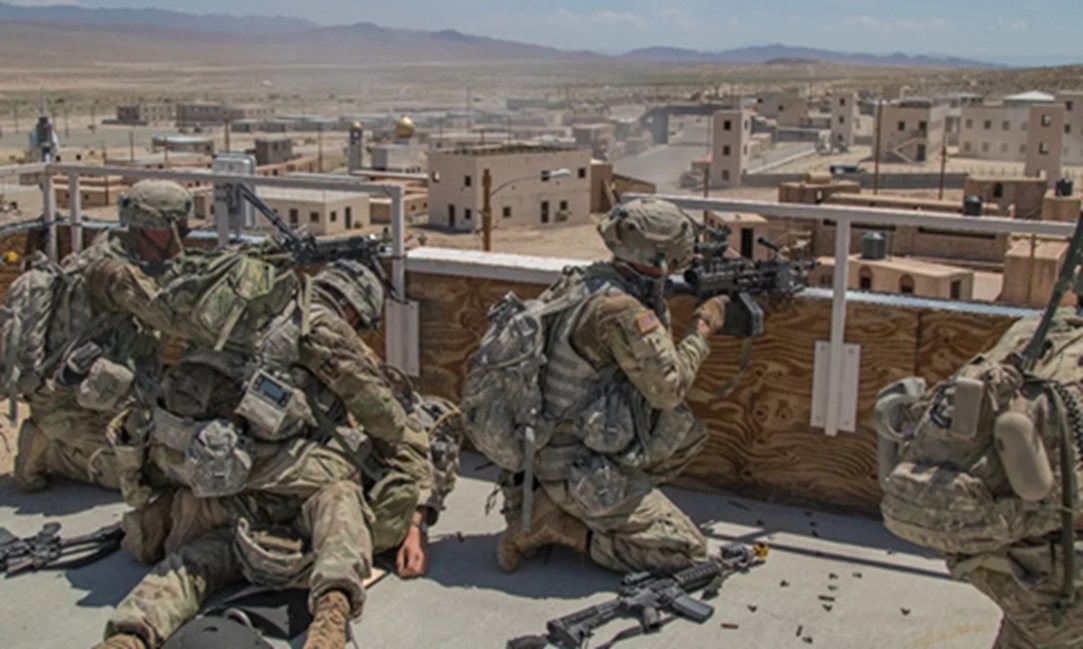The terrorist attack of April 22, 2025, in Pahalgam resulted in the death of 26 innocent tourists. In retaliation, India struck multiple targets in Pakistan and Pakistan-administered Kashmir. Targeting Pakistani ships off the Makran coast or the oil handling facilities in Karachi port could seriously impact Pakistan’s war-waging capability.
Prime Minister Narendra Modi said he has full confidence in the Indian armed forces and has given them “complete operational freedom to decide on the mode, targets and timing” of India’s response to the attack. This was after two Cabinet Committee on Security meetings and a meeting between PM Modi, Defence Minister Rajnath Singh, National Security Advisor Ajit Doval, Chief of Defence Staff General Anil Chauhan and the three service chiefs. Modi has also reportedly met the Indian Navy Chief Admiral Dinesh K. Tripathi separately on Saturday (May 3).
There have also been a slew of diplomatic and other measures by India which appear to be a part of a larger strategy to keep Pakistan on edge, until a firm decision can be taken on the way ahead, keeping the escalation matrix and nuclear thresholds in mind.
Any military action would most probably be undertaken jointly by the three services, using kinetic and non-kinetic methods. Cyberattacks can achieve spectacular results without a single shot being fired or borders being crossed. Israel, for example, had paralysed operations at Iran’s Port of Shahid Rajaee in 2020 for at least a week by hacking into the port computer network. Covert action offers deniability and could be used to support forces such as the Baloch Liberation Army in Pakistan, with weapons and equipment.
Units of India’s Western and Eastern fleets, the two “sword arms” of the Indian Navy (IN), including the INS Vikrant Carrier Battle Group (CBG), have reportedly proceeded to sea to take up their assigned battle stations. These would naturally have been preceded by P-8I maritime surveillance aircraft and Sea Guardian drones, which are the “eyes and ears of the fleet” and would be scouring the seas to locate Pakistani units, including submarines.
A task force of the Western fleet has been conducting multiple anti-ship and anti-aircraft missile firings within India’s Exclusive Economic Zone (EEZ) in the North Arabian Sea to demonstrate combat readiness and deter potential threats in the region. The Indian Coast Guard (ICG) has also been deployed in coordination with the Navy along the International Maritime Boundary Line (IMBL) with Pakistan and elsewhere. Pakistan too is carrying out its own naval exercises on its side of the IMBL, not too far away.
Indian submarines would rightly be on the prowl in the Arabian Sea at this critical time. These mean metallic sharks would be in a ‘run silent, run deep’ mode, awaiting orders. They carry torpedoes, anti-ship missiles, land attack cruise missiles, and mines, and can launch marine commandos for special operations if and when required. INS Arihant and INS Arighat, the country’s indigenous nuclear-propelled submarines with their submarine-launched ballistic missile (SLBM) capability, are a part of India’s nuclear triad, sending a strong message in response to Pakistan’s ‘nuclear sabre-rattling’.
Pakistani Army Chief Gen Asim Munir, speaking a few days before the Pahalgam attack, described Kashmir as the ‘jugular vein’ of his country. However, as far as India is concerned, Pakistan has a least two jugular veins. One is the flow of water facilitated by the ‘Indus Water Treaty’, which the Indian government has very rightly put in abeyance. The waters are critical for Pakistan’s agricultural sector and have the potential to create social tensions there.
The other important ‘jugular vein’ is her ‘Sea Lines of Communication’ running from the Straits of Hormuz in the west to Karachi in the east along the 1,046 km long Makran coast, along which flows her imports of crude, petroleum products and other essential commodities. Targeting Pakistani ships off the Makran coast or the oil handling facilities in Karachi port could seriously affect Pakistan’s war-waging capability. The Navy’s battle-hardened Marine Commandos, or MARCOS, could be used to carry out clandestine attacks on offshore oil rigs and port infrastructure.
While the Pakistan Navy cannot match the Indian Navy’s overall strength, it has ambitious plans to build a 50-ship force within the next decade to narrow the gap with India and has increasingly turned to China for this purpose. Pakistan has acquired four Type 054A/P frigates from China and contracted for the procurement of eight Yuan-class submarines fitted with ‘Air Independent Propulsion’. The Pakistan Navy has also inducted corvettes from Türkiye and the Netherlands. Pakistan has reportedly just tested an indigenously developed ship-launched ballistic missile, which would also need to be factored in. While China is not expected to provide direct help to Pakistan, it could provide covert support and intelligence, especially on the position and movement of our aircraft carrier and task forces. Chinese units entering the Indian Ocean through the Malacca, Lombok and Sunda Straits would be tracked by P-8I maritime aircraft and units of the Eastern Fleet.
Closer home, a repeat of the 26/11 type of attack using a drone or unmanned surface or underwater vehicles is a distinct possibility. The 13 State Marine Police forces and the Customs Marine Wings would have to be on high alert to protect our valuable assets along our 11,098 km long coastline from such attacks.
As our forces prepare to go ‘in harm’s way’, the people of this country would like to wish them more ‘happy hunting’.
Title Image Courtesy: https://www.ship-technology.com/
Disclaimer: The views and opinions expressed by the author do not necessarily reflect the views of the Government of India and Defence Research and Studies
Article Courtesy: The Week







